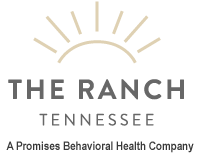Last year 45.6 million Americans were diagnosed as having a mental, emotional, or behavioral disorder. One in five adults suffers from mental illness. The 2011 National Survey on Drug Use and Health recently revealed statistics on the mental health of the nation’s citizens.
Demographics of Mental Illness
In a study of over 65,000 people, researchers compiled a snapshot of how mental illness affects millions of Americans from adolescents to senior citizens.
- In ages 12 to 17, depression affected millions of youth.
- Ages 18 to 25 had twice the rate of mental illness as senior citizens.
- Ages 50 and older had nearly 14 percent with mental illness compared to ages 18 to 25.
- Women-23 percent had mental illness.
- Men-16 percent had mental illness.
Mental Illness and Suicide
The heaviness of mental illness can cause individuals to contemplate and attempt suicide. According to the report, nearly 8.5 million adults seriously contemplated suicide last year. Approximately 2.4 million adults made their suicide plan, while 1.1 million attempted suicide. America’s children are also suffering their own bouts with mental illness. The study reported that 2 million children aged 12 to 17 suffered from a period of major depression last year. Each participant was counted as suffering a depressive episode if they had depression for a minimum of a two-week period and also exhibited four of seven symptoms of major depression. Other studies have shown dangerous links between depression and suicidal thoughts and tendencies.
Mental Illness and Substance Abuse
Some individuals abuse medications or alcohol in their attempt to try and help their mind escape their mental illness. Individuals with serious mental illness were 16 percent more likely to have symptoms of substance abuse than those who did not have mental illness. In adolescents, the report found that those with mental illness were at higher risk of illicit drug use. Adolescents aged 12 to 17 who had an episode of major depression were not only at risk for suicide, but for greater drug use. In the past year, they engaged in twice as much illicit drug use as adolescents who were untouched by major depression.
Treatment for Mental Illness
Pamela Hyde, an administrator with the Substance Abuse and Mental Health Services Administration (SAMHSA), looks on the positive side of all these statistics as she asserts that mental illness can be identified and is treatable. Individuals can recover and lead healthier and happier lives. Researchers were encouraged that many participants were seeking help with their mental illness through professional treatment in the year they were studied. Sixty percent of those with serious mental illness were seeking treatment, while nearly 38 percent of adults with mental illness had gone to a professional seeking mental health services. Those who suffer from mental illness are not alone. Millions of Americans suffer from everything from anxiety to bipolar disorder. Treatment specialists, therapists, doctors, family, and friends can help these individuals heal. With greater awareness of mental illness comes greater knowledge of it. With greater knowledge comes understanding…and with it all comes hope to heal.
